She was shot by a stranger in Chester County. She thinks a red flag law might have prevented it.
Gun removal laws take effect in three states next month. But those efforts have stalled in Pennsylvania.

Starr Cummin Bright, a gunshot survivor, speaks with state Sen. Tom Killion, R-Delaware/Chester, ahead of a panel discussion on Oct. 1, 2019, at the Chadds Ford Township Municipal Building. (Ed Mahon/PA Post)
A stranger shot Starr Cummin Bright.
It was June of 1991, and the 35-year-old mother and veterinarian walked into a church’s meeting hall in southern Chester County.
The man she ended up sitting next to had a history of delusions, hearing voices and blackouts.
At some point after she sat down, the man got up and left the church only to come back a few minutes later, carrying a gun. He walked up to Bright and shot her.
Then he threw the gun, a .32 caliber revolver, into a corner and walked outside.
“I need a lawyer. I shot her,” the 36-year-old man later told a police officer, according to charging documents. “I just realized what I done a couple of minutes ago. I just got out of the hospital. I’m paranoid-schizophrenic.”

The shooter pleaded “guilty but mentally ill” to aggravated assault and received a five- to 10-year sentence.
Bright survived, but has lived with pain and PTSD for the past 28 years. The bullet went through her side, broke off a piece of her backbone and damaged sensory nerves along her spinal cord.
In the aftermath, the pain led Bright, who grew up on a Chester County farm surrounded by animals, to give up her career as a veterinarian. She still deals with pain, and says swimming, biking or any kind of intense exercise helps. It feels, she said, like she’s slogged through the past 28 years trying to find a way to live a fulfilling life.
As part of that, Bright turned to advocacy in the hope that she could prevent someone else from going through what she has.
Today, she is pushing Pennsylvania lawmakers to give courts the power to take guns away from people like the man who shot her, people who are a danger to themselves or others.
Extreme risk protection orders — often referred to as “red flag laws” — didn’t exist back in 1991.
“That could have perhaps saved me from being shot,” Bright, 63, said in an interview at a Kennett Square coffee shop.
Creating these orders has met resistance in Pennsylvania, a state with a deep hunting and gun culture that was one of the first to include a right to bear arms in its constitution. It’s also a state where more than 1,600 people died in gun deaths in 2017 — a rate higher than the national average.
The debate is playing out among lawmakers and advocates. Are these orders a reasonable way to reduce homicides and suicides? Or do they infringe too much on a gun owners’ rights and make it too easy for an ex-partner or someone with a vendetta to misuse?
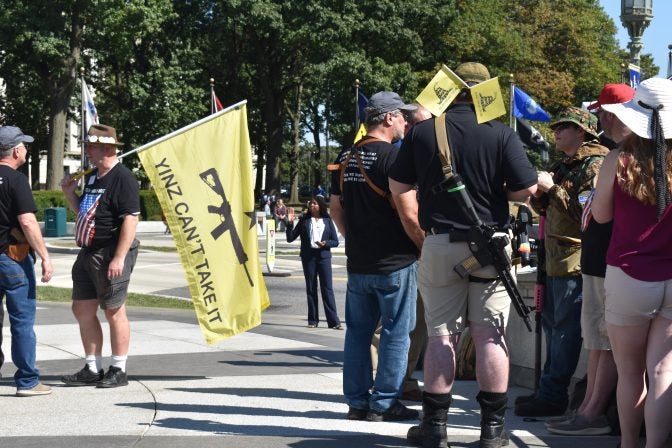
To try to find answers, you have to look elsewhere.
Across the country, 17 states and Washington, D.C., have passed red flag laws giving courts the power to temporarily remove gun rights from individuals. Laws in three of those states — Nevada, Hawaii and Colorado — are scheduled to take effect next month.
In just seven of those states — which provided data to PA Post and WITF — courts issued more than 1,300 final orders limiting a person’s gun rights in 2018 cases. And, this year, courts in nine states that provided data have approved at least 2,000 of those types of orders.
Those thousands of cases offer lessons for Pennsylvania.
Statewide suicide rates aren’t guaranteed to drop, but studies show promise
Most states only adopted red flag laws within the last few years, many in the wake of the 2018 Marjory Stoneman Douglas shooting in Parkland, Florida.
Indiana and Connecticut are outliers.
Connecticut enacted its version of a red flag law in 1999, after a disgruntled worker at a state lottery office shot and stabbed four of his bosses, then shot himself. Indiana’s law came in 2005, after a man with mental health issues that law enforcement knew about killed his mother and a state police officer.
The particulars of the laws vary by state. Generally, they allow someone — in Pennsylvania and several other states, it would be a “family or household member” or law enforcement officer — to request that a court temporarily take weapons from a person who may be dangerous or suicidal. Judges can decide to take away someone’s gun rights without the gun owner having a chance to mount a defense, but only at first.
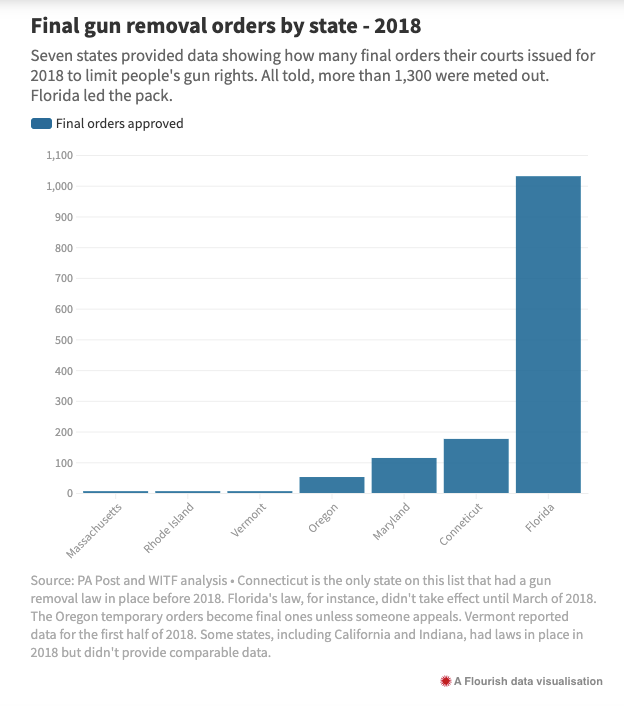
After the initial seizure, the subject of the order is generally able to appeal and have a full hearing before the judge, in which the gun owner can make a case for reversing the original order. The judge then decides whether to give the weapons back or continue the ban for a longer period, often three months to a year.
It’s difficult to draw a straight line between the enactment of red flag laws and a reduction in gun deaths. Many factors can influence the amount of gun violence or the number of suicides in any state.
But supporters point to studies in Indiana and Connecticut.
Jeffrey Swanson, a professor of psychiatry and behavioral sciences at Duke University’s School of Medicine, said the years of data the two states have accumulated make them ideal candidates for study.
When Swanson set out to test whether red flag laws work, he said he quickly realized that although both states had enacted them in response to homicides, they have been most measurably effective in preventing suicides.
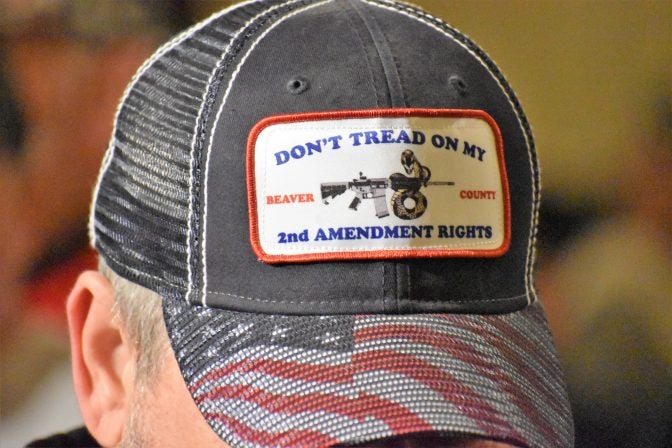
He and his colleagues began their investigation by comparing records of everyone in Indiana and Connecticut who had been subjected to extreme risk protection orders to records of people who had died by suicide in subsequent years.
Even after people had their guns removed, some still killed themselves — in fact, people who were subject to red flag laws were about 30 to 40 times likelier to die by suicide than the general population. Swanson said this shows that while red flag laws can’t prevent death in 100 percent of cases, they do a good job flagging people who are at risk.
With these death records, Swanson said he and his team were able to do “a little algebra” to figure out how many more people would have died if no extreme risk orders had ever been issued.
They determined that for every ten to twenty people who have their guns removed in Connecticut and Indiana, one suicide is prevented.
Red flag skeptics sometimes point out that states that have adopted the laws don’t necessarily have lower suicide rates. According to the CDC, in fact, nearly every state saw a significant increase in the rate of suicide between 1999 and 2016. In about half of states, the increase hovers around 30 percent.
Indiana is one of the states that saw a particularly big jump.
Swanson argued that red flag laws are simply too limited to have population-wide effects on suicide and homicide numbers.
“Let’s say you go into a school system with a remedial reading program…and provide this extra help to five percent of the students in the whole school district. And then you evaluate it by asking whether it has increased the reading level of the entire school,” he said.
It makes more sense, Swanson said, to evaluate the impact on people who actually got the intervention.
Swanson is generally bullish on red flag laws, framing them as a creative way of sniffing out potential tragedies that both liberal and conservative policymakers can often agree on.

Andrew Morral, a senior behavioral scientist at the RAND Corporation and director of the National Collaborative on Gun Violence Research, told Pennsylvania’s Senate Judiciary Committee he wasn’t as convinced.
He said there’s not a lot of compelling evidence for or against gun laws in general.
But he said that doesn’t mean laws aren’t working. He said the federal government and states haven’t invested enough money in gun violence research.
Law enforcement leaders say they work
Everytown for Gun Safety, a supporter of these orders, has a fact sheet with more than two dozen examples of news coverage of laws protecting people from harming others and themselves, such as a California man who, The Sacramento Bee reported in 2018, allegedly sent “threatening text messages referencing a recent sniper attack against police in Dallas, then loaded his guns into his car and set off.” Police confiscated seven weapons, including a scoped rifle, after serving the man with a protective order at his workplace.
In Washington state, Kim Wyatt said the gun removal cases represent the most rewarding work she’s done in her nearly 20-year career as a prosecutor.
She has seen a few cases where people come back, months after having their guns removed, to thank law enforcement officers for stepping in.
“That was incredibly powerful,” said Wyatt, senior deputy prosecutor in King County.
King County, home of Seattle, has received national attention for its approach to gun removal laws. Wyatt works on a special unit, responsible for ensuring people comply with court orders that require them to relinquish guns. Investigators follow up on cases, look at social media, talk with family members, and apply for warrants if needed.
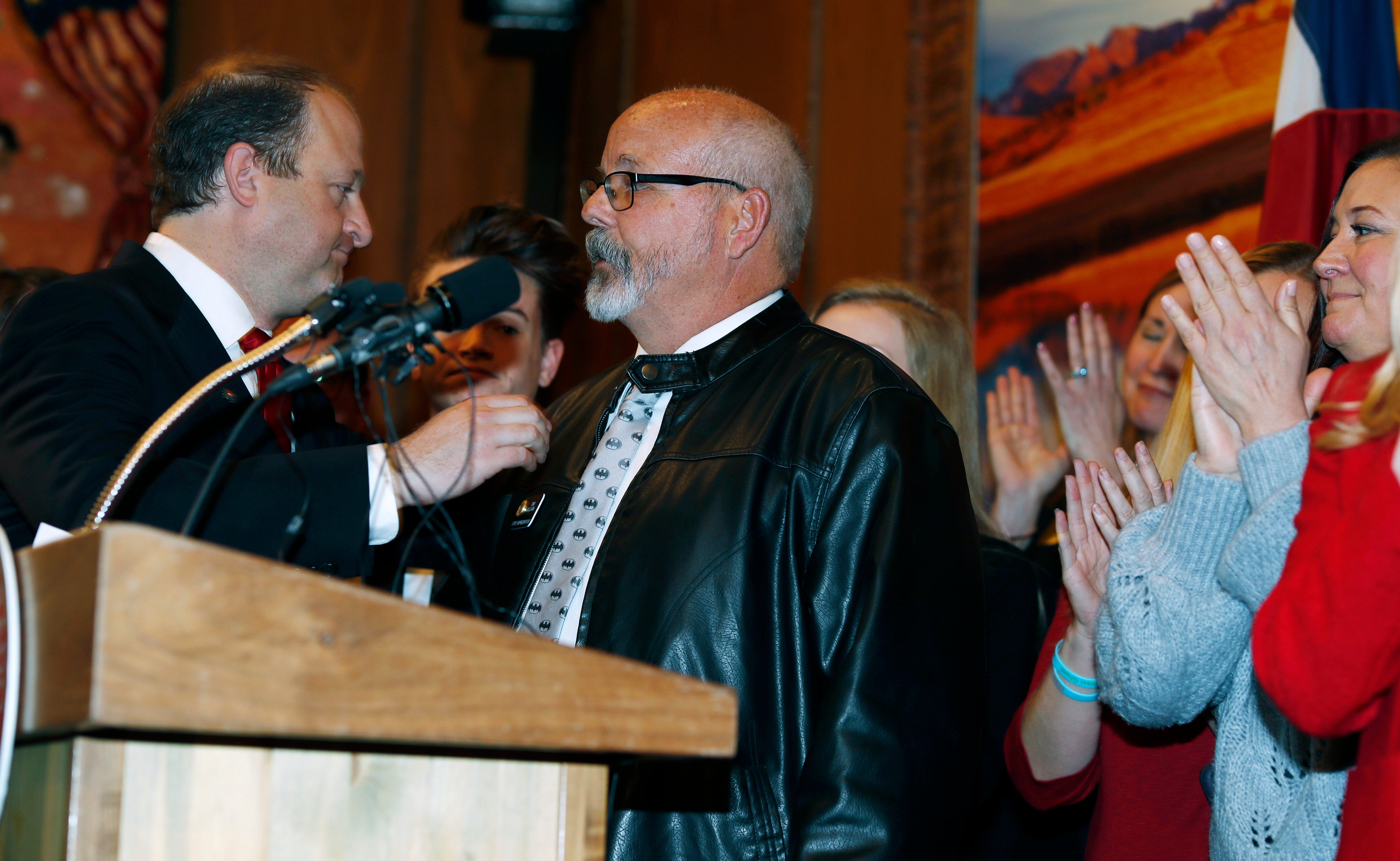
And King County law enforcement successfully used the state’s gun removal law to seize guns from an alleged leader of a small white supremacist group.
Still, even in King County, Wyatt said the law is used relatively rarely. She said there were about 70 of those orders filed in the county of about 2.2 million people last year.
“It’s not as if we are filing hundreds and hundreds a month of these,” Wyatt said. “We are very thoughtful in that process.”
In Florida, a Tampa Bay Times story in October described how the state’s law was used against a man who allegedly said, “I’m gonna shoot the most people ever and be famous for it,” and who described the New Zealand mosque shooter as “his people.” Overall, more than 2,600 Floridians had been ordered to turn over weapons under the law from March 2018 through August 2019, the Times reported. A state attorney estimated recently that the Florida law has been used roughly five times per day since it was enacted.
Controversy followed a Maryland case
In Maryland, counties that have experienced recent mass shootings (for example, Anne Arundel County where five people were killed at the Capital Gazette newspaper in June 2018), tend to see more people requesting orders, said Montgomery County Sheriff Darren Popkin, who worked on creating Maryland’s law and has been tracking cases.
He said at least six of the gun removal cases statewide involved schools — and four of them represented “significant threats.”
Maryland courts approved 646 temporary orders and 425 final protective orders in the first 12 months of the new law.

“There’s no doubt in my mind, based on the seriousness of the orders that have come in, that there have been lives saved,” Popkin said.
But Maryland’s new law faced controversy in its second month after an officer-involved shooting.
The incident started with problems between Gary J. Willis and his sister — problems that escalated on Nov. 4, 2018.
“You’re dead bitch. I’m going to shoot you,” Wanda Walters recalled him yelling through a window, according to police.
Walters called police and then asked the court for protection.
The court approved two orders. One was a protective order that said Willis could not contact, threaten or harass Walters and required him to leave his residence, which was on a property where many family members resided. The second, an extreme risk protection order, required Willis to give up any guns he possessed.
On Nov. 5, 2018, two Anne Arundel County police officers showed up to Willis’s home shortly before 5:20 a.m. to serve the orders. After a confrontation, one of the officers shot Willis.
The details about what happened that night have been seized upon by gun rights supporters to push back against enacting red flag laws in Pennsylvania.
“Already in the state directly below us a man has been gunned down because of these gun confiscation orders,” Erich Pratt, senior vice president for Gun Owners of America, said during a Second Amendment rally in Harrisburg in May.
Pratt asked the hundreds of people gathered in the Capitol’s Main Rotunda how they would answer the door if they heard loud knocking before the sun was up.
They yelled their response back.
“With a gun in hand, exactly right,” Pratt said. “Well, that’s what Gary Willis did — not in a threatening way. But he’s dead now as a result.”
But police officers say Willis threatened them.
When Cpl. Jessica Hooper and Officer Gary Zawodny arrived at his home, they said he answered the door while holding a revolver in his hand. Then he put the gun on a counter inside his home and stepped outside to talk with officers.
Zawondy told investigators he didn’t recall Willis being particularly upset about surrendering the gun, but that Willis was angry about being forced out of his home.
“Nobody can make me leave,” Zawondy recalled Willis saying.
This is what Zawondy said happened next: Willis stepped back into his home, saying he needed to use the bathroom. Hooper tried to stop him. Then Willis grabbed the revolver. Hooper tried to take it away from him, with Willis pointing it at her head during the struggle. Then Zawondy shot him multiple times.
Willis’s gun fired once during the struggle, but the bullet didn’t hit anyone.
A deputy state’s attorney concluded Zawodny’s actions were justified, and both officers were cleared to return to duty.
After the shooting, police in Anne Arundel County changed how they handle serving the gun removal orders, said Marc Limansky, a spokesman for the department.
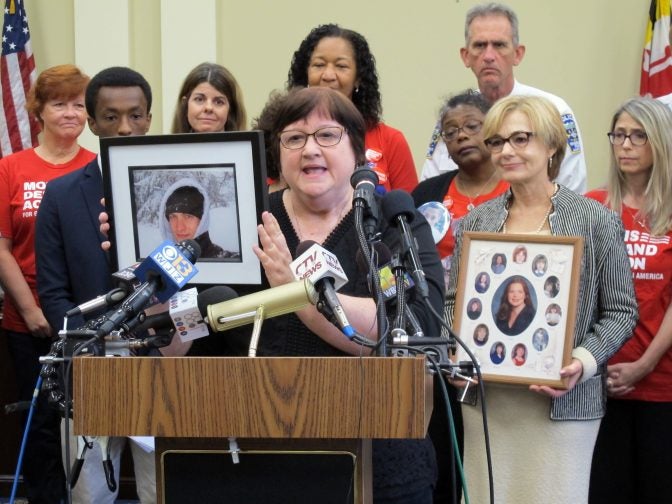
Officers serving the orders notify a domestic violence officer or detective who helps with a quick background investigation about the person’s history, the layout of the property and guns.
Limansky said the confrontation with Willis and his death “probably shed some light on something that could have been done better, and so these changes were implemented.” But Limansky rejected the idea that the case is an example of the problems that arise when serving extreme risk protection orders.
Rather, Limansky said, Willis was upset about leaving the home — not giving up a gun. So he said the case shows the dangers that exist whenever officers serve protective orders.
Usage Varies
The number of people who seek out and receive this protection varies. In Washington, D.C., a new red flag took effect in January 2019. From then until early December, courts received only two petitions — one in September, and one in November. Preliminary and final orders were granted in both cases.
Meanwhile, Anne Arundel County in Maryland reported more than 100 final extreme risk protection orders approved from the start of 2019 through November.
There could be many reasons why use of the law varies so widely. But Mark Jones, a senior policy adviser with the Illinois Council Against Handgun Violence, said the most significant one he has encountered is the amount of time and money states spend making sure police are trained to use red flag laws and informing the public about them.
Jones said he ran into the issue himself after Illinois enacted a red flag law earlier this year.
“What’s occurring around the country in states that have passed emergency risk laws, is that there’s not any money attached for implementation, so they end up sitting still for a couple years,” he said.
He said his group is trying to help Illinois avoid that by “essentially doing the state’s job until they figure out how to do the job.”
Thanks to some grant money, they’re working with the state Attorney General to put together a curriculum to train police and hold public informational forums. In roughly a year, Illinois’s law has been used 54 times, and Jones said it is gaining traction.
That’s the rationale for legislation that has been proposed on the federal level. Over the summer, Sens. Lindsey Graham, R-S.C., and Richard Blumenthal, D-Conn., announced that they’re working on a measure to provide state police departments with grants to implement statewide red flag laws and hire mental health professionals.
Despite bipartisan support, it’s unclear how much traction the idea has. Graham and Blumenthal have proposed similar bills in the past to little effect.
Legislation is stalled in Pennsylvania
In a state Capitol that sees most political debates break down on party lines, the proposed extreme risk protection bill is strikingly bipartisan. The main division rests within the Republican party, between the more moderate suburban wing and the libertarian-minded, NRA-endorsed rural bloc.
Outside the Capitol, reactions to the proposal have followed that pattern.

Law enforcement groups, including the Pennsylvania District Attorneys Association, have endorsed red flag laws in Pennsylvania.
Republican Bucks County District Attorney Matt Weintraub said a red flag law might have helped keep guns out of the hands of Cosmo DiNardo, who pleaded guilty in 2018 to killing four young men on a remote farm.
State law already barred DiNardo from possessing guns because he had been involuntarily committed to a mental institution. And he had a few dozen interactions with police, including a dismissed illegal gun possession charge.
But Weintraub said an extreme risk protection order would have given family and law enforcement an additional option.
“I think if we had had a red flag law in place, I can’t guarantee that those four young men would be alive today, but they certainly would have had a better chance of survival,” Weintraub said.
The state chapter of the American Civil Liberties Union raised concerns when the bill first surfaced, worried that taking firearms without a full hearing constituted a due process violation.
That’s a complaint the bill’s more conservative opponents frequently bring up too. But state ACLU Legal Director Elizabeth Randol said in her case, those concerns were assuaged after the group worked with the bill’s sponsors to make “some corrections and changes and adjustments,” such as raising the risk standard and narrowing the timeframe for risky behavior.
The group now has a neutral stance on the measure.
There has not been a lot of public opinion polling on the issue in Pennsylvania.
But in an October Franklin & Marshall College poll, 62 percent of Pennsylvania registered voters surveyed said they strongly favored giving courts the ability to seize someone’s guns if they are judged to be a threat to themselves or others.
Another 18 percent of people surveyed somewhat favored the measure.
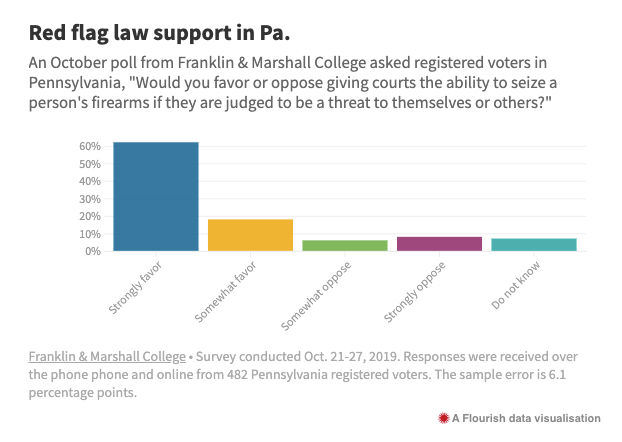
The National Rifle Association remains opposed, and many Republican lawmakers have voiced concerns about the due process rights of people forced to give up their guns. One powerful committee chairman, state Rep. Ron Kauffman, R-Franklin, pledged to never bring up the measure for a vote.
State Rep. Eric Nelson, a Westmoreland County Republican, represents his caucus on a special council that is responsible for coming up with recommendations to reduce gun violence. Recommendations are due this spring.
He raised concerns about the gun removal orders during a November hearing in York and the idea that sheriffs could come and take the guns of someone who hasn’t had a chance to defend themselves.
“How does that not become very scary for me as an American?” Nelson said.

The issue is a top priority for the Pennsylvania chapter of Moms Demand Action and CeaseFirePA. They’ve organized rallies in the Capitol and across the state.
Bright, the gunshot victim in Chester County who became an advocate, participated in a panel discussion this fall in state Sen. Tom Killion’s district, along with Jennifer Lugar, whose husband killed himself in 2009. They spoke in a renovated stone building with mementos and artwork honoring the 1777 Battle of Brandywine.
After the 1991 shooting, Bright spent nearly two weeks in the hospital. She learned how to walk again at a rehab facility.
“I had and still feel like I have sharp glass pressing into the bottom of my left foot all the time,” Bright said at the discussion.
When she got home, she couldn’t pick up her children, so she would go down to the floor to change her 1-year-old’s diaper.
Bright had studied at the University of Pennsylvania’s School of Veterinary Medicine, but, after her injury, she found working with animals too difficult.
Bright left veterinary medicine. She got involved in politics, winning election to become a local Republican committee member.
She considers herself a centrist. Republicans had most of the positions of power in Chester County in the 1990s and early 2000s, and serving as a committee person, she thought, could help keep centrist Republicans on the ballot.
Bright liked meeting people and registering voters, but after several years, decided politics wasn’t right for her.

She said she didn’t get active again in political issues until 2012, after a shooter killed 20 children and six staff members at Sandy Hook Elementary School.
She attended a vigil and started working with a group of people to prevent gun violence. Now, she’s the legislative lead for a Chester County-based group called GunSenseUs.
“We’re really just trying to talk to people about the culture of gun violence and … coming up with solutions,” she said.
The county, with its farms and small towns, looks bucolic. But Bright said there’s still gun violence there, and her story is an example of that.
She came up with different adjustments for her own pain, and they are part of her daily routine.
She avoids sitting directly on hard wooden chairs. At home, they have padded chairs. And if she’s out, she’ll fold up a jacket, place it on the chair and then sit on it.
She still rides horses, but using stirrups is too painful, so she relies on a bareback pad. When she sleeps, she uses a sheet elevator to keep sheets and blankets off her legs.
Over the years, Bright has gotten used to telling her story publicly — but usually in sittings of only five or 10 minutes. The fall event and discussion lasted over an hour.
Near the end, a familiar feeling kicked in for Bright. She found herself having trouble concentrating. She felt worn down by it.
“And so it was hard,” Bright said weeks later. “But it was worth it — anything that we can do to show that something like a red flag bill would work.”

Ed Mahon can be reached at emahon@papost.org. Katie Meyer can be reached at katie_meyer@witf.org.
WHYY is your source for fact-based, in-depth journalism and information. As a nonprofit organization, we rely on financial support from readers like you. Please give today.





